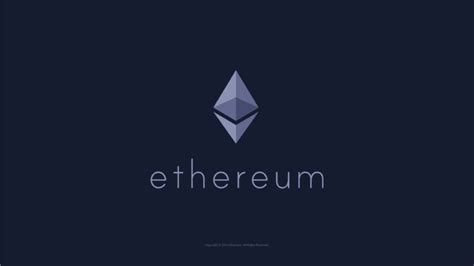Ethereum Classic: Understanding the Original, Unforked Blockchain

`markdown
Preview: Delve into the world of Ethereum Classic, the original Ethereum blockchain that remained true to its principles after the infamous DAO hack. Learn about its history, philosophy, current status, and future prospects in this comprehensive guide.
What is Ethereum Classic?
Ethereum Classic (ETC) is a decentralized, open-source, blockchain-based computing platform, similar to Ethereum (ETH). It's essentially the unforked version of the Ethereum blockchain after the DAO hack in 2016. While Ethereum (ETH) implemented a hard fork to reverse the DAO hack, Ethereum Classic continued on the original, unaltered blockchain, upholding the principle of "code is law."
The History Behind Ethereum Classic
The genesis of Ethereum Classic is rooted in the infamous DAO hack of 2016. The DAO (Decentralized Autonomous Organization) was a groundbreaking smart contract built on Ethereum that aimed to operate as a venture capital fund. However, a vulnerability in its code allowed an attacker to drain a significant portion of its funds.
This event sparked a massive debate within the Ethereum community about whether to hard fork the blockchain to reverse the hack. A majority voted in favor of the hard fork, which created a new version of Ethereum (ETH) where the stolen funds were returned to their original owners.
However, a segment of the community strongly opposed the hard fork, arguing that it violated the fundamental principles of blockchain immutability and censorship resistance. This group continued to maintain the original, unforked blockchain, which became known as Ethereum Classic.
Ethereum Classic's Core Principles
Ethereum Classic is driven by the following core principles:
- Immutability: The blockchain should be immutable, meaning that once transactions are recorded, they cannot be altered or reversed, even in the face of errors or exploits.
- Censorship Resistance: The blockchain should be resistant to censorship, meaning that no single entity should be able to prevent valid transactions from being included in the blockchain.
- "Code is Law": This principle emphasizes that smart contract code should be the ultimate authority, and its execution should not be interfered with, even if it leads to undesirable outcomes.
- MESS (Modified Exponential Subjective Scoring): ETC is moving towards this to deter 51% attacks.
- Continued Development: Efforts are ongoing to improve the network's scalability, security, and functionality.
- Community Growth: Building and fostering a strong developer and user community is crucial for its long-term viability.
- Value immutability and censorship resistance above all else.
- Believe in the "code is law" principle.
- Want to support a blockchain that remained true to its original vision.
- Ethereum Classic is the original Ethereum blockchain, unforked after the DAO hack.
- It emphasizes immutability, censorship resistance, and the "code is law" principle.
- While it faces challenges, Ethereum Classic maintains a dedicated community and ongoing development efforts.
Ethereum Classic vs. Ethereum (ETH)
| Feature | Ethereum Classic (ETC) | Ethereum (ETH) |
| ------------------ | --------------------------- | ------------------------- |
| History | Original, unforked chain | Hard forked chain |
| Philosophy | Immutability, Code is Law | Intervention, Flexibility |
| Consensus Mechanism | Proof-of-Work (Migrating to Modified Proof of Stake)| Proof-of-Stake |
| Community | Smaller, focused on principles | Larger, more diverse |
The Future of Ethereum Classic
The future of Ethereum Classic remains a topic of discussion and speculation. While it hasn't seen the same level of adoption and development as Ethereum (ETH), it maintains a dedicated community that believes in its core principles. Key developments to watch include:
Why Choose Ethereum Classic?
Choosing Ethereum Classic is often a philosophical decision. Individuals and projects may opt for ETC if they:
Current Status of Ethereum Classic
As of today, Ethereum Classic continues to operate as a functional blockchain. It has a dedicated community of developers and users, and its native cryptocurrency, ETC, is traded on various cryptocurrency exchanges. While the price of ETC and market capitalization are considerably lower than ETH, it continues to prove its resilience.
Key Takeaways
Frequently Asked Questions (FAQ)
Q: What is the main difference between Ethereum Classic and Ethereum?
A: The main difference is their history. Ethereum Classic is the original, unforked blockchain, while Ethereum (ETH) is the hard-forked version created to reverse the DAO hack. This difference leads to differing philosophical viewpoints regarding immutability and intervention.
Q: Is Ethereum Classic secure?
A: Ethereum Classic has faced challenges with 51% attacks in the past. However, ongoing development efforts, including the implementation of MESS, are aimed at improving its security.
Q: What is the future of Ethereum Classic?
A: The future is uncertain, but Ethereum Classic's long-term success depends on factors like continued development, community growth, and its ability to differentiate itself in the competitive blockchain landscape. Its adherence to core blockchain principles could appeal to a specific niche within the cryptocurrency ecosystem.
`




